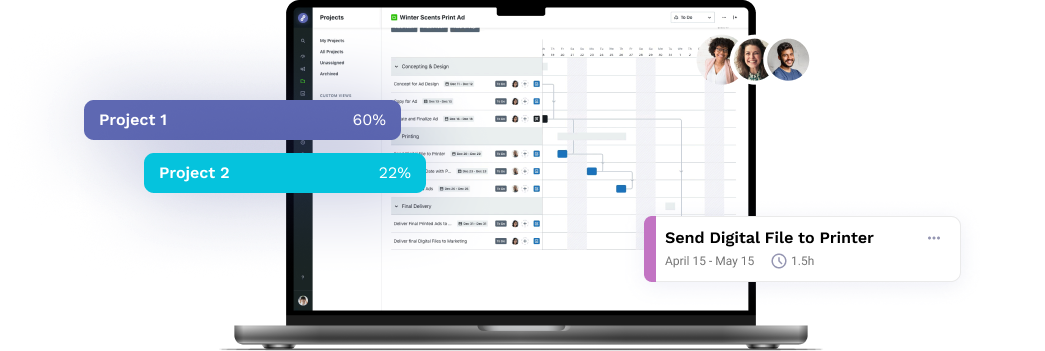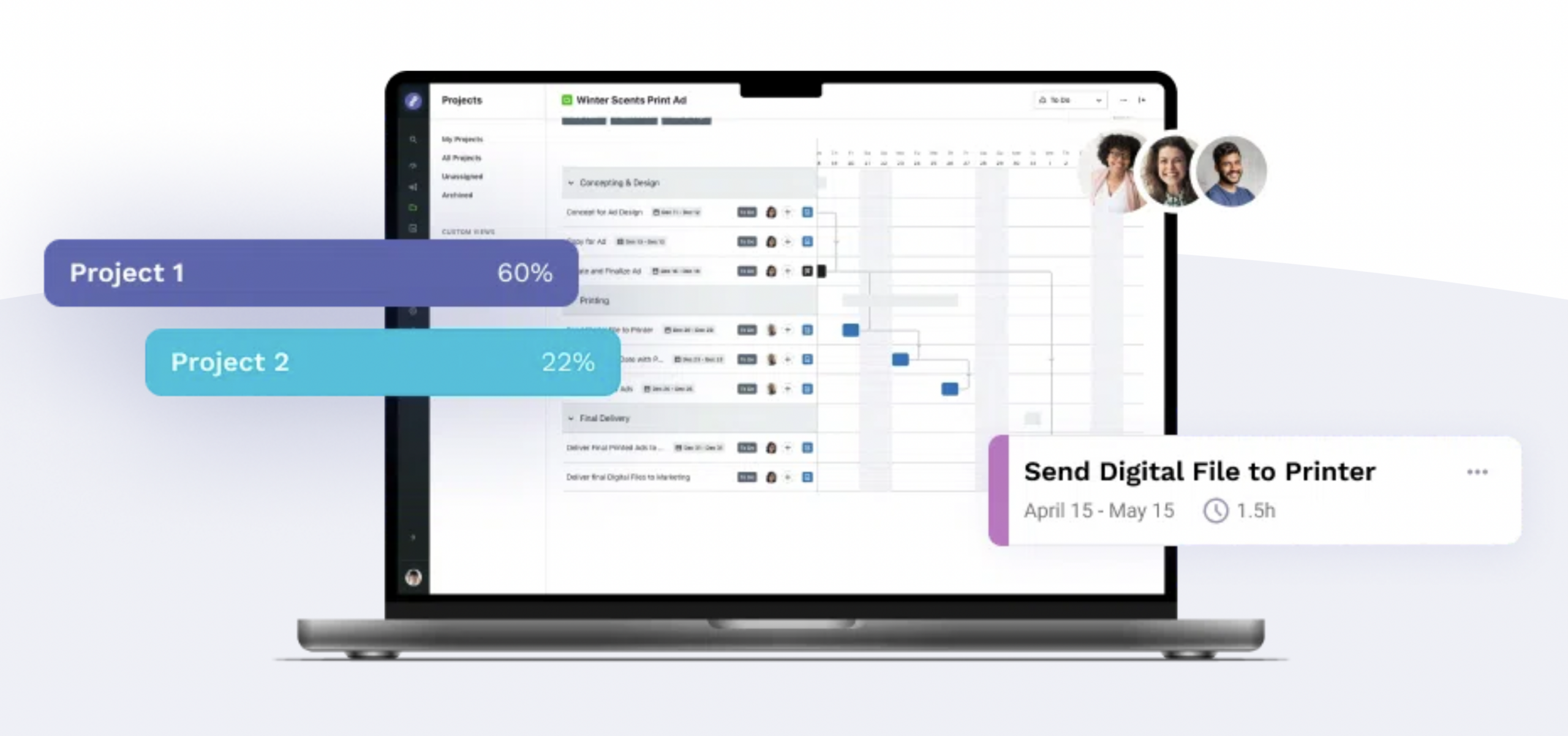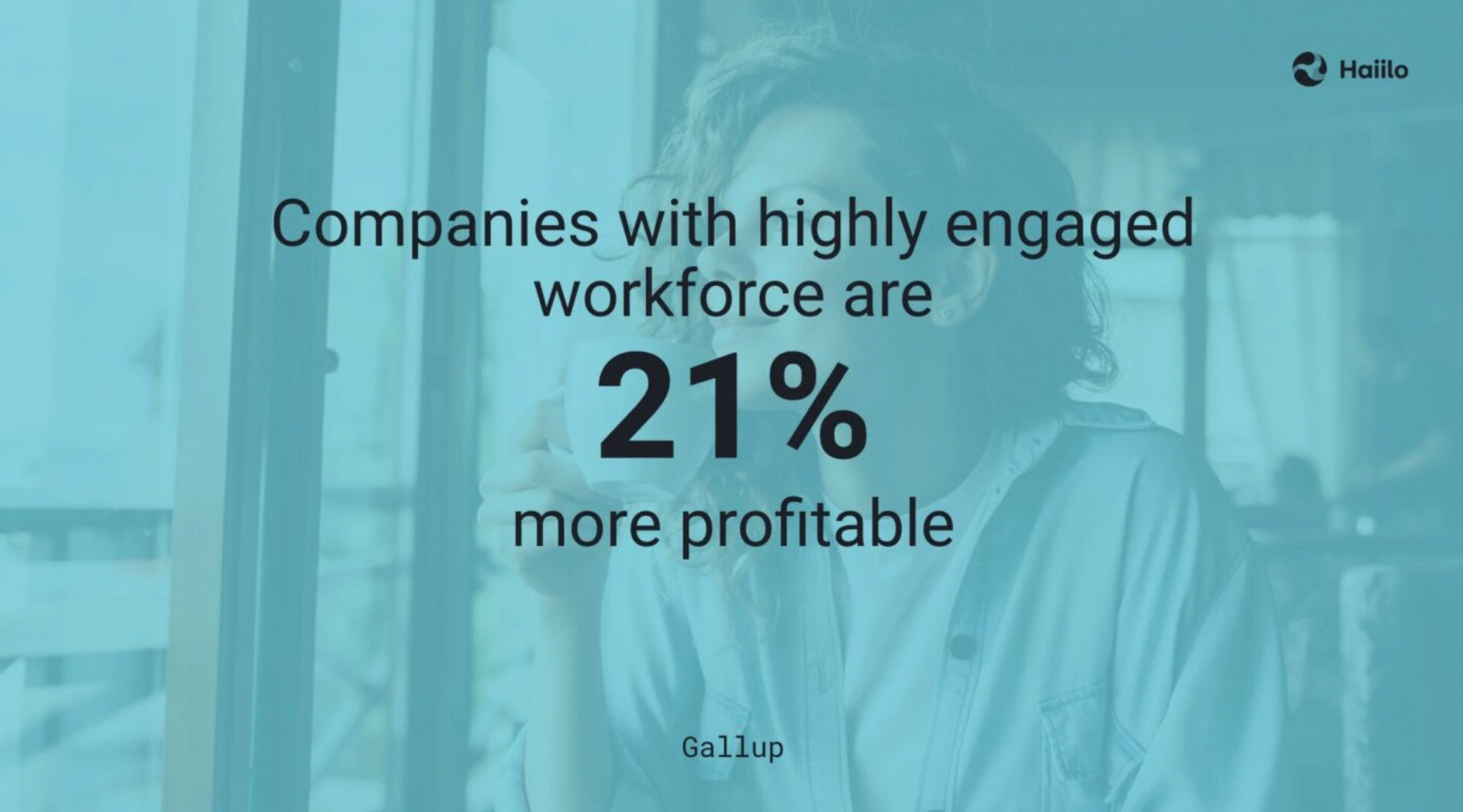
Creative leadership isn’t just about turning challenges into opportunities. (Although that’s definitely important, too!) It’s also about building a culture of innovation … which isn’t as easy as it sounds.
We’re exploring 11 key challenges creative leaders face — and providing actionable insights to help you better leverage data and drive your organization forward.
Evolving Creative Leadership Landscape
1. Keeping Up with Rapid Technological Advancements
Challenge:
Technological advancements are progressing at an unprecedented rate. By 2025, it’s estimated that 50 billion devices will be connected to the Industrial Internet of Things (IIoT), and 70% of new applications will use low-code/no-code technologies, up from less than 25% in 2020.
Solution:
To keep pace with these advancements, leaders must emphasize a culture of continuous learning and adaptability.
Encouraging team members to stay updated with the latest technologies and providing training opportunities can ensure that your organization remains at the forefront of innovation. Leveraging AI and other emerging technologies can also streamline operations and enhance creativity in leadership.
2. Managing Remote and Hybrid Teams
Challenge:
The shift to remote and hybrid work environments presents unique challenges for creative leadership. Maintaining team cohesion and effective communication can be particularly difficult when team members are dispersed.
Solution:
Implementing robust communication tools and strategies is essential. Regular virtual meetings, collaborative platforms, and clear communication channels can help bridge the gap. Fostering a strong culture through virtual team-building activities and regular check-ins can also enhance team cohesion and creativity.
Fostering a Culture of Creativity
3. Overcoming Resistance to Change
Challenge:
Resistance to change is a common obstacle in many organizations. Employees may be hesitant to adopt new processes or technologies, hindering creativity and innovation.
Solution:
Creating an inclusive environment that values diverse perspectives and encourages open-mindedness is key.
Leaders should communicate the benefits of change and involve team members in the decision-making process to foster a sense of ownership and acceptance. Highlighting successful examples of innovation within the organization can also help mitigate resistance.
4. Balancing Creativity with Business Objectives
Challenge:
Striking the right balance between fostering creativity and meeting business objectives can be challenging. Too much focus on creativity without alignment with business goals can lead to inefficiencies and missed targets.
Solution:
Aligning creative goals with business strategies is crucial. Utilizing creative workflow software can help streamline creative processes, ensuring that your team’s efforts are innovative and strategically aligned with business objectives.
These tools assist in setting clear expectations, providing strategic direction, and regularly reviewing the alignment between creative efforts and business goals.
Enhancing Team Collaboration
5. Bridging Cross-Functional Collaboration Gaps
Challenge:
Cross-functional collaboration is essential for driving innovation, but silos between departments can hinder this process.
Solution:
Encouraging interdepartmental communication through regular meetings, joint projects, and collaborative platforms can help break down silos. Leaders should promote a culture of teamwork, and recognize and reward collaborative efforts.
6. Encouraging Risk-Taking and Innovation
Challenge:
A culture that punishes failure can stifle creativity and innovation. Employees may be reluctant to take risks if they fear negative consequences.
Solution:
Creating a safe space for experimentation and learning from failures is vital. Leaders should encourage risk-taking by celebrating innovative ideas and viewing failures as learning opportunities. Providing resources and support for experimentation can also support a culture of innovation.
Leveraging Data and Analytics
7. Utilizing Data to Drive Creative Decisions
Challenge:
Making informed decisions based on robust data analytics is crucial. According to recent statistics, nearly all large organizations will consistently use data in their work by 2025, with data-sharing platforms becoming integral to collaboration.
Solution:
Invest in analytics tools and training to harness data for informed creative decisions. By integrating data analytics into your decision-making processes, you can gain insights into:
-
Customer behaviors
-
Market trends
-
Performance metrics
This approach enhances creativity and ensures that your strategies are grounded in real-world data, leading to more effective and innovative outcomes.
Navigating Organizational Dynamics
8. Addressing Internal Politics and Conflicts
Challenge:
Internal politics and conflicts can significantly hinder the creative process within an organization. These issues can create a toxic work environment, reducing productivity and stifling innovation.
Solution:
Develop strong conflict resolution skills and promote transparency within your organization. Leaders should foster an open and inclusive culture where team members feel safe to express their ideas and concerns.
Regular training sessions on conflict resolution and effective communication can also help mitigate these issues. Transparent decision-making processes and clear communication channels can further reduce misunderstandings and build trust within the team.
9. Retaining and Nurturing Creative Talent
Challenge:
Retaining and nurturing creative talent is essential for maintaining a competitive edge. A recent report highlights that companies with high employee engagement are 21% more profitable, emphasizing the importance of nurturing talent.
Solution:
Implement mentorship programs and career development opportunities to support the growth of creative individuals. Providing a clear path for career advancement and recognizing employees’ contributions can increase job satisfaction and loyalty.
Additionally, fostering a positive and inclusive work environment where creativity is encouraged and valued will help attract and retain top talent.
Future-Proofing Creative Leadership
10. Preparing for Future Market Trends and Disruptions
Challenge:
Staying ahead of market trends and disruptions is critical for maintaining a competitive edge. The market size for big data analytics in various industries is projected to grow significantly, indicating the increasing importance of data in predicting and preparing for market changes.
Solution:
Stay informed about industry trends and develop strategic foresight. Regularly review market research and trend reports to anticipate changes and adapt your strategies accordingly. Encouraging a culture of continuous learning and agility within your organization will help you respond swiftly to new opportunities and challenges.
11. Scaling Creative Initiatives
Challenge:
Scaling creative initiatives effectively requires robust processes and resources. The complexity of managing larger-scale projects can often lead to inefficiencies and resource constraints.
Solution:
Develop scalable creative processes and invest in the right resources. Establish clear guidelines and frameworks that can be easily adapted as projects grow. Investing in project management tools and training can also help streamline processes and ensure that your creative initiatives can scale successfully.
Embrace Change in Creative Leadership Today with Lytho
To harness creative leadership, leaders must embrace continuous learning to stay ahead of technological advancements and manage remote teams effectively. Fostering creativity involves overcoming resistance to change and aligning creative goals with business objectives. Enhancing collaboration, leveraging data for informed decisions, and nurturing talent are key to future-proofing leadership and ensuring sustained innovation and growth.
Ready to enhance your creative leadership and drive innovation? Discover how Lytho’s creative workflow software and digital asset management solutions can streamline your processes and foster a culture of creativity. Schedule a demo with Lytho today and see how our tools can transform your leadership strategy and boost your team’s productivity.
Do you want to give yourself and your creative team more room for creative stimulation by automating the boring stuff? Lytho helps you streamline your entire workflow and harmonize all brand collateral under a single, uniform platform. Feel free to reach out to us by scheduling a demo and learning how our creative solutions can boost the effectiveness of your creative projects. We look forward to speaking with you!

Ready to simplify your creative operations and start having a little fun at work again? Schedule time to talk with us.
Let us show you how Lytho’s Creative Operations Platform helps in-house creative and marketing teams do better work, ease the stakeholder experience, and stay on brand.
Schedule a Demo
